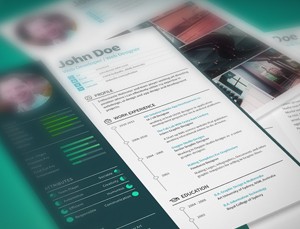A resume is more than just a piece of paper because it describes the background and highlight of someone’s life and career. It is a jobseeker’s marketing tool in selling himself. Below are steps which can help a job aspirant in creating a pre-employment document that will be helpful in seeking and securing a job.
Step 1: Planning
Before starting in writing a resume, you, as the applicant, have to consider taking time to think of your skills and professional experiences. There are few different application formats for you to choose from. A well-organized list of your background allows the employer to easily review it. Once you select the appropriate format, it will be easier for you to discuss the contents one by one. Here are the resume formats:
- Chronological. It is the most commonly used type of application document. It is usually the standard form of resume listing employment history in sequential order. It focuses more on the professional experience of an applicant.
- Functional. It focuses more on your skills and abilities. This format is usually used by someone who wants to change career. Also, this is ideal for those who have less experience or no employment record at all.
- Combination. This is the result of the merger of chronological and functional formats. It is more flexible and versatile than the two.
Step 2: Personal Information
You can use your personal information as your header. This includes your full name, address (where you currently live), contact numbers, and e-mail address. Always remember to put any contact details in your resume so that the employer can contact you for possible interview. Do not put any unnecessary personal information like hobbies or interest in writing a resume. It will just make the document long and boring.
Step 3: Objective
An objective is the explanation of your goal for applying for a specific position. This section can also bring an impact to the hiring manager. Make sure that your objective is composed of only one sentence, which is straightforward. Employers want this portion to be precise and definite.
Step 4: Desired Position
Specify the position you want. Try to avoid putting “any position available.” Look for the vacant job posts and choose the position that best suits your qualifications.
Step 5: Summary of Qualifications
If you are a new graduate, you might consider focusing on your skills and abilities. Try to explain any of the related school activities or challenges and how you overcome them. On the other hand, if you already have the experience, highlight your qualifications by citing five sentences or phrases that start with powerful adjective or adverb. One sample phrase is, “Highly self-motivated and goal-oriented professional committed to build and cultivate strong business relationship with clients.”
Step 6: Employment History
If you chose the Chronological format, consider listing your work history in reverse order, from most recent backwards. Do not forget to include the dates (month and year) of employment, the name of the firm and the location, and your key accomplishments.
Step 7: Educational Background
List the name of the school where you graduated, the degree/s earned, and the year you graduated.
Step 8: References
Modern application papers do not contain this section for it is now considered obsolete.
Considering the above thoughts, applicants will surely get positive results. Writing a resume may not always be difficult, especially if someone learns to be creative. If you still don’t know what to do, hire an online professional resume writer.




